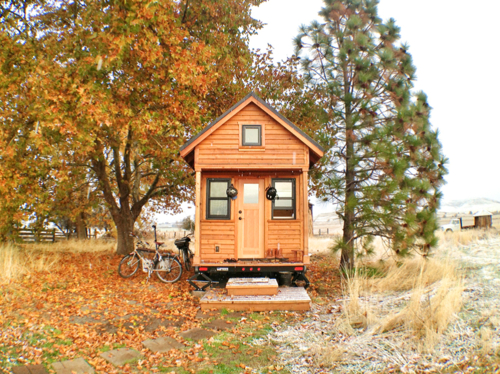
By choosing to live a simpler lifestyle, it opens up possibilities and gives you more freedom and time to invest in the things you truly care about or always wanted to do. And by downsizing your living space, you also have to decrease your amount of belongings. Living with the things you actually use and liberate yourself from all the ‘stuff that is cluttering your life’ as tiny house owner Malissa Tack puts it. This
way you also become more conscious of the way you live, creating a more intentious lifestyle and connecting you with your direct environment. Another advantage, since you can not do everything in your tiny house, you engage more in your living environment. You spend more time outside of the house, and depending on where you live this results in a closer relationship with nature and/or society. But less space and less stuff also means less maintenance. And less usage
of resources, contributing to a smaller ecological footprint. Additionally, it is also a cheaper lifestyle, due to the reasons named above. It is cheaper to purchase, to maintain, to sustain and less place for new stuff to buy without true need for it.
This all means that in the end you have more time and more money to spend on yourself and the things you like. Most of the tiny house inhabitants say that the advantage of the tiny life for them is the financial and material freedom, while contributing to a better future. It relieves you from the pressure to work to be able to pay for your fixed expenses (rent, mortgage, utility costs etc), and instead enables you to feel free to enjoy your life.